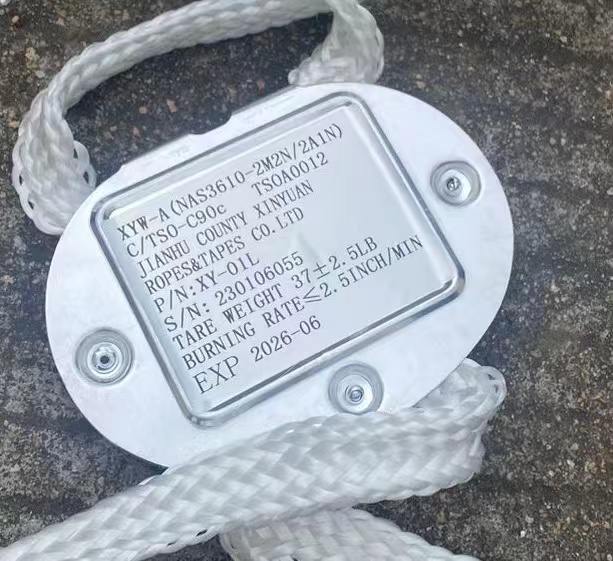Navigating the Evolving Landscape of ULD Life Limitations
The longstanding question of "What is the life of a ULD?" has recently undergone a significant shift in perspective. Traditionally, the answer revolved around repairing a ULD as long as needed. However, emerging regulations and findings from extensive investigations have reshaped the conversation around the safe lifespan of containers, pallets, air cargo nets, and air cargo straps. This article aims to shed light on the evolving concept of ULD life limitations, addressing the challenges and implications for the industry.

air pallet net expiry tag
Unveiling Standards and Changes
A quick examination of the air cargo net and container door fabric reveals a need for standardized conditions for these crucial ULD components. Despite apparent wear and tear, many nets and fabric elements are still in use. This scenario is changing with the introduction of life limitations, especially for materials susceptible to degradation from factors like ultraviolet (UV) light exposure.
Historical Context and Recent Developments
While the IATA ULD Technical Manual long recommended a 1.25 lifing factor for the air cargo net, this provision was not consistently reflected in certification requirements due to added weight and cost considerations. Recent changes stem from an extensive European Union Aviation Safety Agency (EASA) investigation, prompting regulatory updates and collaboration with the US Federal Aviation Administration (FAA).
New Regulations
Key regulations now mandate that new ULD designs under TSO C90d must demonstrate a defined life for non-metallic components vulnerable to environmental degradation. Air cargo straps certified under TSO C172 must adhere to a specified service life. IATA ULD Regulations require all air cargo nets to be marked with an expiry date, effective from January 1, 2014.
Industry Impact and Response
Some industry sectors are grappling with increased costs and adjustments as airlines realize the financial implications, particularly for cargo nets. However, the industry's lax approach to managing textile items in ULD led to the imposition of these rules. Once introduced, these regulations are expected to persist, emphasizing the importance of industry-wide compliance for safety.
Practical Considerations
Implementing these new requirements involves identifying the expiry date of textile items, with the responsibility mainly falling on workshop-level management. The approach of "let's use it one more time" is giving way to rigorous adherence to expiry dates during ULD checks. Shelf life concerns for unused nets and straps are addressed, clarifying that only manufacturers can mark expiry dates.
The industry faces financial and operational challenges with the enforcement of ULD life limitations. However, these regulations are non-negotiable safety measures aimed at rectifying inadequate industry practices. Navigating this evolving landscape requires a commitment to compliance, vigilance in ULD management, and a collective effort to prioritize flight safety over cost considerations.
How Can We Help You
Welcome to CargoSecures, your trusted partner in air cargo safety. How can we tailor your order today? Specify your requirements below, from customizable aesthetics to ultra-durable nets and webbing crafted with the world’s strongest yet lightest fiber. Let's craft a solution that ensures your cargo reaches its destination securely with the least added weight.
